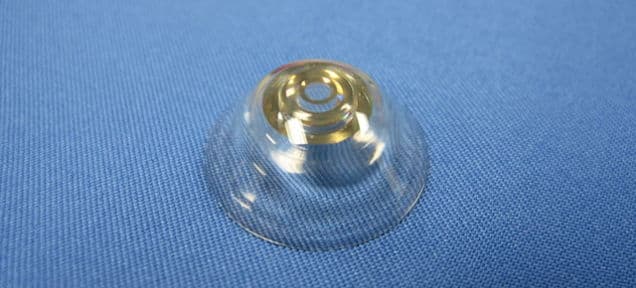We generally take our vision for granted, which is rather surprising, considering that there are hundreds of millions of people in the world who have vision problems—some 285 million people worldwide. Although a majority of these issues can be attributed to insufficient access to basic medical care, even those with access to modern medicine face a number of illnesses and disorders. Indeed, the number of people in the United States suffering from various ocular disorders is quite alarming, and the outlook for most of us is a rather bleak.
According to the American Academy of Ophthalmology, nearly 22 million Americans who are over age 40 have cataracts (the most common cause of vision loss in adults). By the time that they reach 80, more than half of all Americans will have cataracts. On top of this, more than 2 million people living in the United States who are over 50 have age-related muscular degeneration. Another 4.4 million Americans over 40 have diabetic retinopathy...the list of ocular disorders goes on and on.
However, new hope could be on the horizon.
Swiss researchers are in the process of developing contact lenses that contain tiny telescopes. But before you get any fancy ideas, no, these will not allow you to spy on your neighbor, cheat on a math test, or peer into the icy reaches of the outer solar system (though who knows, perhaps the devices will have such capabilities someday). But for now, the devices offer a boost to vision and can allow individuals to zoom in on an object more than 2.8 times, which is more than enough for many people with vision issues. Oh, and it lets you do it all with the wink of an eye.
Yes, you read that correctly. The new contact lens contains an extremely thin, reflective telescope that is activated by winking. And amazingly, it is just 1.55 millimeter-thick.
Of course, some may be a bit concerned by this technology. What if you sneeze, what if you get dust in your eye? Won't the device start zooming in and out sporadically? The engineers behind the product say that this shouldn't be a concern. The lenses come with something called "smart glasses." These are supposed to be sophisticated enough to respond to the wearer's winks, but not their blinks i.e., the device should be able to differentiate between the two.
Ultimately, the winking trigger should allow individuals to seamlessly switch back and forth between normal and magnified vision. Moreover, the products can actually track eye movement. This will make the contacts easier to use, as individuals do not need to tilt their head in order to see different objects by looking through different portions of the lens (which is a great advancement from previous models and current devices).
The prototype was unveiled by Eric Tremblay from the Ecole Polytechnique Federale de Lausanne in Switzerland at the American Association for the Advancement of Science (AAAS) on Friday (Feb. 13, 2015).
Although AMD, and many similar issues, do not generally result in total vision loss, these conditions often make it difficult to preform everyday tasks and function effectively in society. According to the National Eye Institute, "AMD can interfere with simple everyday activities, such as the ability to see faces, drive, read, write, or do close work, such as cooking or fixing things around the house." Part of the reason that this device is so effective is because, not only is it capable of magnifying objects 2.8 times, it removes much of the "clunkiness" of current options.
"It's very important and hard to strike a balance between function and the social costs of wearing any kind of bulky visual device. There is a strong need for something more integrated, and a contact lens is an attractive direction," Tremblay asserts.
Tremblay says that this device could bring some much needed relief to people suffering from various vision issues; however, he simultaneously cautions that the technology is still in its early stages: "We think these lenses hold a lot of promise for low vision and age-related macular degeneration...at this point this is still research, but we are hopeful it will eventually become a real option for people with AMD."
Interestingly enough, these little devices didn't start out as a medical device. At least, not really. The contacts were funded by the Pentagon, and they were meant to serve as a form of bionic vision for soldiers. But as is true of many other technological deices that were initially created for the military, they could bring new hope to millions of ordinary citizens.
Share This Article
